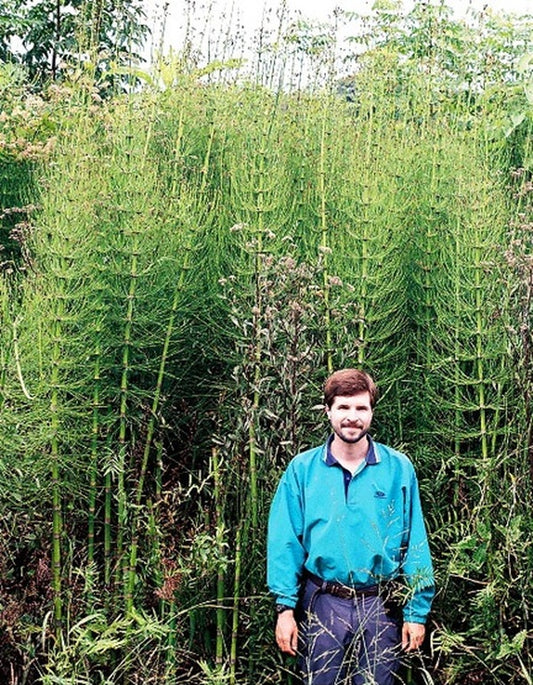Equisetum plants have a unique and beautiful architecture. The plants form a spreading patch of narrow, hollow, unbranched cylinders, similar to small bamboo canes.
-
Equisetum giganteum 'El Tabacal'
Item #: 8490
Zones: 8b to 10b, at least
Dormancy: Evergreen
Height: 120" tall
Culture: Sun to Part Sun
Origin: Argentina
Pot Size: 3.5" pot (24 fl. oz/0.7 L)
Regular price $29.00Regular priceUnit price per
More Information About Equisetum
The genus Equisetum is truly fascinating as it is the single surviving genus of a group of very primitive plants (the class Equisetopsida) dominant in the age before the dinosaurs. Their reproductive methods are closely related to ferns which means that equisetum plants produce reproductive spores instead of seeds. There are only 15 species of equisetum left today, but their native habitats are spread throughout the world with the exception of Australia, New Zealand, and Antarctica.
Equisetum plants have a unique and beautiful architecture. The plants form a spreading patch of narrow, hollow, unbranched cylinders, similar to small bamboo canes. The stems sometimes produce a whorl of many narrow, needle-like, primitive leaves surrounding each node. When it comes time to make spores, equisetum plants produce separate fertile canes with a small cone-like structure at the tip. Equisetum tends to accumulate silica from the ground and excrete it into the cell walls, which makes the canes and "leaves" quite rigid and abrasive. These abrasive plants have long been used as scouring agents, earning them the common name "scouring rush". Although the young buds of one species, Equisetum arvense, are eaten as a vegetable in Japan and Korea, the high silica and heavy metal content of the canes makes them inedible and even toxic.
Most equisetum prefers a moist environment along the edge of a pond or in a low-lying bog, wet woodland, meadow or seepage area where it can tolerate prolonged wet conditions as long as it is not submerged and does not dry out. In tropical areas some species, like the true Equisetum giganteum, can grow up to 30' tall, but the species available to temperate zone gardeners will rarely exceed 3'. Equisetum prefers full or part sun and tolerates poorly drained soils quite well. Equisetum is a popular container plant because of its vertical architecture. The plants will spread indefinitely in ideal climates and may become weedy, so we recommend keeping your equisetum in containers. When you're ready to buy equisetum for your perennial garden or container, we hope you'll check out our online list of equisetum for sale.



